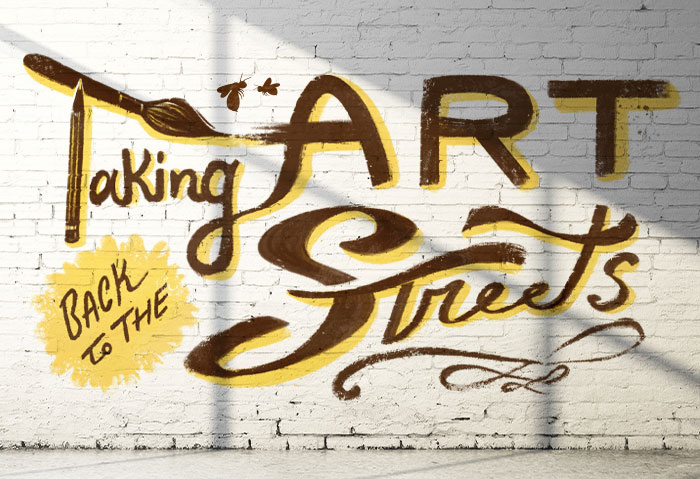The Core of a Campaign: 2020 Edition

As declarations for the 2020 presidential election continue to roll in, campaigns are roaring to life. Candidates are wasting little time deploying their donation machines and email campaigns about attending an upcoming rally. With these campaigns comes a feast of new branding to critique. Every four years, we see the same traditional campaigns surface. Red and blue, through and through. They all look the same and it takes real guts to break away from what people expect. This year, however, we’ve got a whole lot more to talk about.
To no one’s surprise, plenty of candidates are playing it safe. Cory Booker, Julián Castro and John Delaney most notably abide by tradition with a tried and true red and blue palette, paired with a handful of American flags, expected handshakes and toothy smiles. Then we have Amy Klobuchar, who exchanges red for an uninspired primary green, #0b9e47 to be exact. She does get brownie points for the high contrast display serif though. Both of these nods are commendable references to Jimmy Carter’s 1980 re-election campaign, a complete pivot for the time.
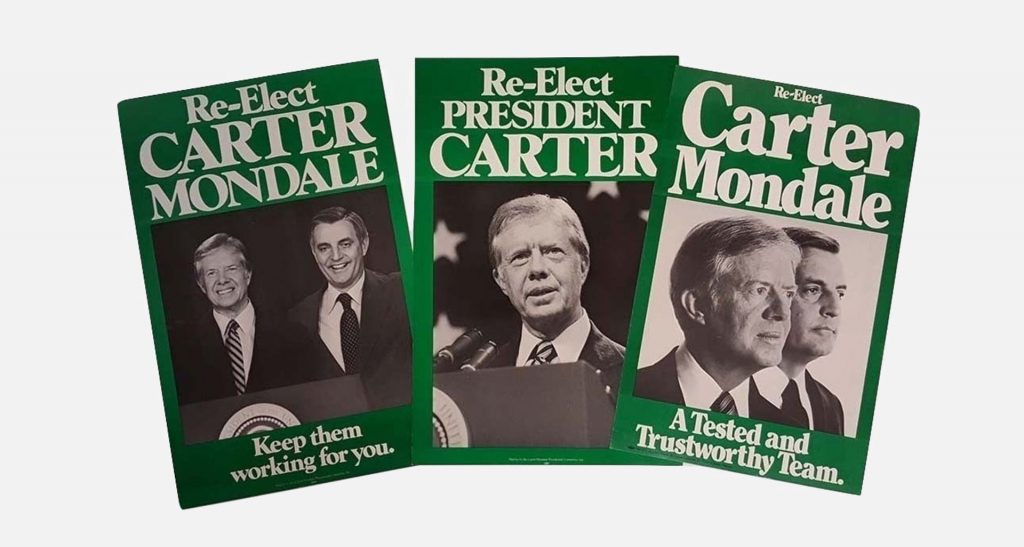
My biggest disappointments come from Bernie Sanders and Beto O’Rourke. I was greeted by the exact same newsletter sign-up form on both of their websites and coincidentally enough, not much else. They each suffer from largely incomplete sites, lacking in their platforms and details about who they are as people. They both already have fairly large followings and dedicated supporters, so it makes me wonder if they’re resting on that alone. There’s still plenty of time for brand rollout, but they’re really lagging behind the rest of the pack in this regard.
In terms of design, we’ve seen this from Bernie in 2016, so there’s not a whole lot of innovation happening. Same logo. Same blue. Same Bernie. Beto embraces angular, condensed typography, making use of a stark black and white palette. He certainly comes off as cool, but there’s still something left to be desired. Black and white can be extremely sexy, but I’m just not sure it humanizes him enough to reach the demographics required to win.
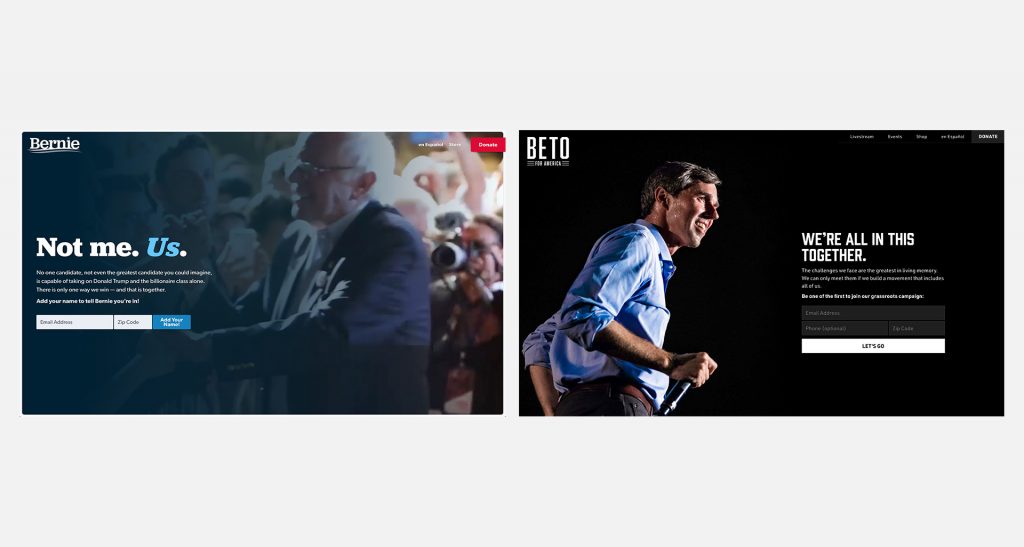
Making America Believe It
A notable difference this time around is the heavy focus on messaging. It worked for Trump, so why not, right? Kamala Harris: For the People. Bernie Sanders: Not me. Us. Elizabeth Warren: Rebuild the Middle Class. Kirsten Gillibrand: Do Something Brave. These promises seem to be the key selling points that are so much more than a slogan. Looking good is just one factor of differentiation with the stakes being so high. Candidates not only have to come up with unique positioning, they’ve got to make the American people believe in it.
At BatesMeron, we lead with this same concept. We create a strong foundation of messaging and positioning for our clients. Many of them come to us with little more than a set of values. We take the time to expand on their beliefs as a company and how they operate as an organization to give them the tools and language to be able to talk about themselves. All of this is done before we even begin the visual portion of a branding project. As a result, this gives our designers a firm foothold when they begin developing visual concepts.
Fierce Females
Beyond just messaging, it’s clear many of the Democratic candidates are looking to veer away from tradition and stand out with their color palettes. However, the biggest standouts for me are all women. Kamala Harris launched a brand chock full of references, and the timing is impeccable. The campaign boasts a palette of purple, red and yellow. It establishes a unique identity apart from candidates like John Delaney and even past campaigns that lean on recurring iconography, like the American flag.
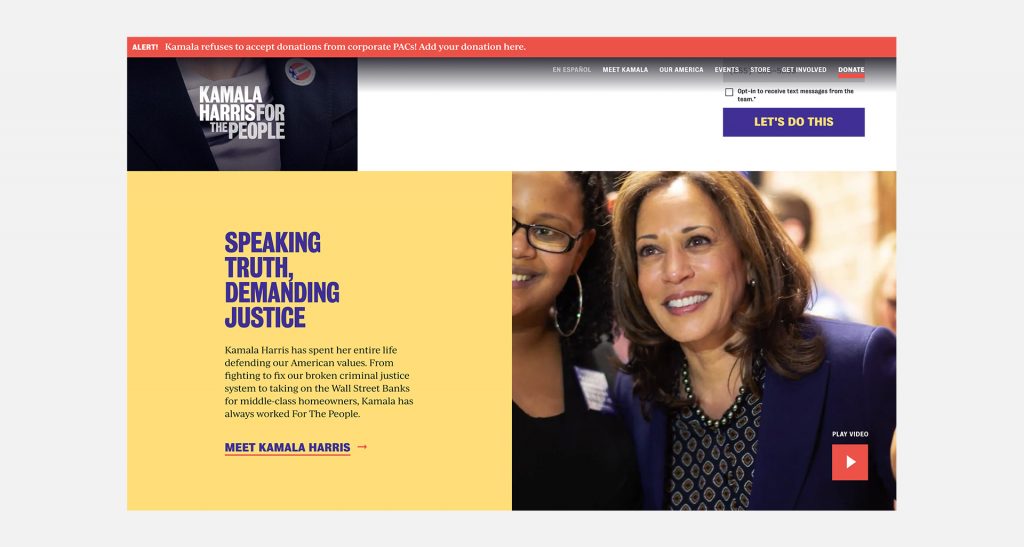
Just last year we saw a flawless execution of purple and yellow from Alexandria Ocasio-Cortez’s 2018 campaign for Congress. A blending of red and blue, perfectly saturated, that just works. Kamala paying homage to Shirley Chisholm’s 1972 run is a tender moment, but honestly Ocasio-Cortez’s similar use of color and all-caps, san-serif typography has already proven that standing out and knowing your audience pays off. So the visual similarities really don’t come as a surprise to me.
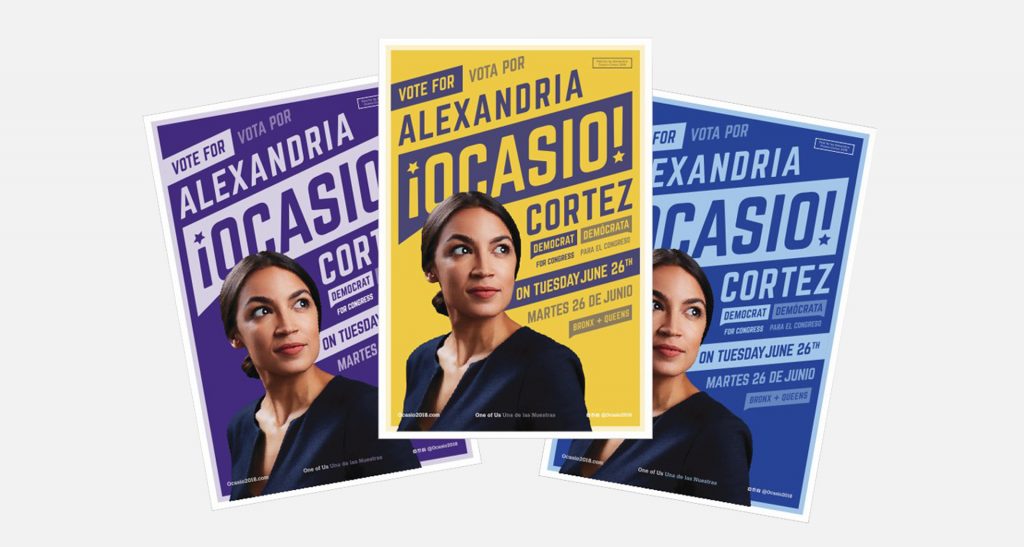
Elizabeth Warren, Kirsten Gillibrand and Tulsi Gabbard don’t shy away from the unconventional either. Mint, “pussy hat” pink and a fiery sunset propel these ladies ahead of the boys’ club. Their campaigns exude strong, feminine energy supported by sincere, on-brand messaging. I spent the most time on Warren’s site simply due to the thoughtful UX. The CTAs are strategically placed. The issues are front loaded, employed with a side-scrolling feature that encourages you to get to know her as you shift back into vertical scrolling.
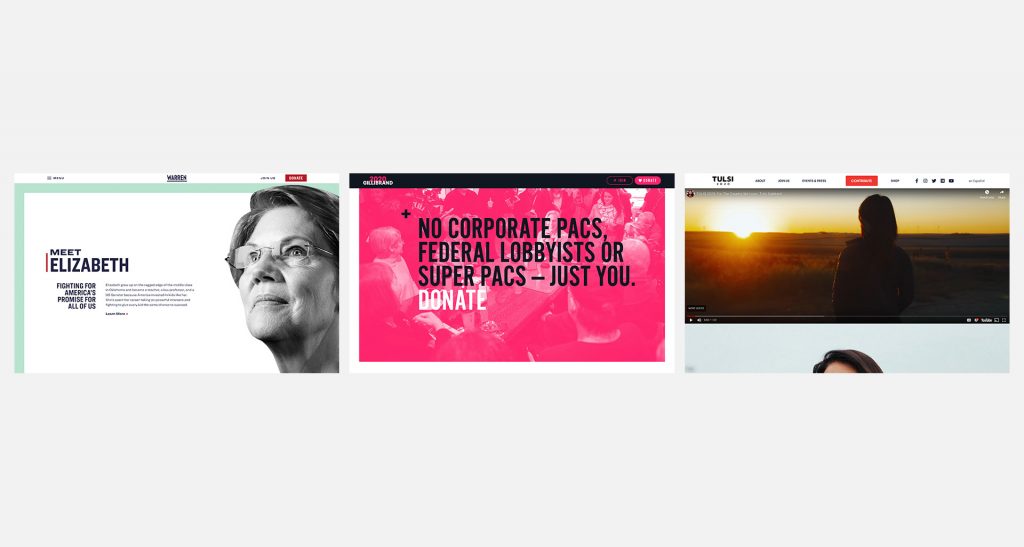
From the President
Trump is really doubling down on Republican Red this time around. He’s got a firm grip on the color, so it’s no surprise his competition is veering away. The navy blue from his 2016 campaign has taken a back seat. He’s adopted a “T” monogram, emblazoned with the number 45 nestled underneath, just in case you forgot he’s the current reigning president. The campaign hasn’t evolved much and he’s still whistling the same MAGA tune. Like it or not, he’s staying true to his brand—and that might be all he needs.
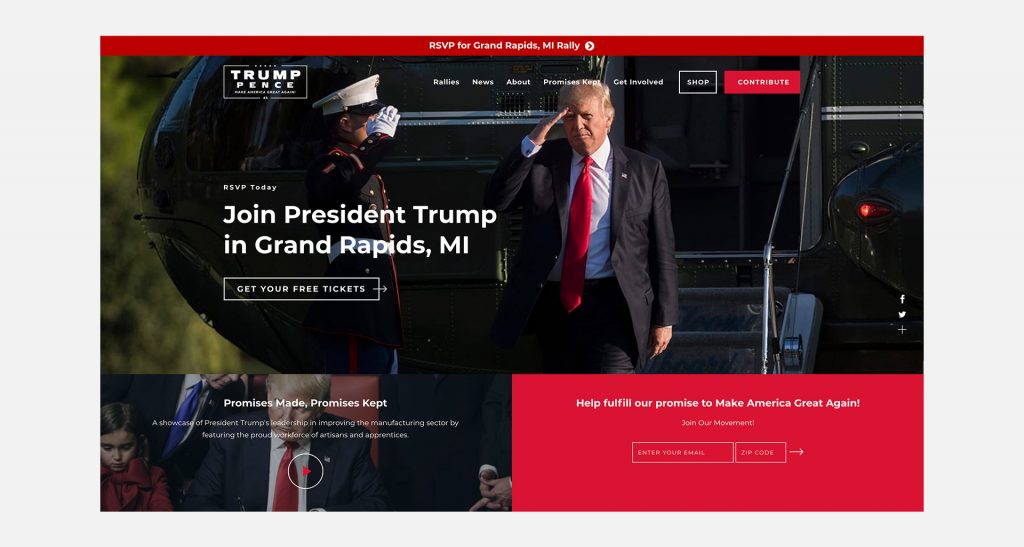
Get That Swag
Merch is an inherent part of campaigning. If your name is going to be plastered all over, figuring out the most attention-grabbing ways is vital. Playing off the meme-ability of the 45th President seems to be a strategy both parties are partaking in. Trump sports his “NO COLLUSION” line of gear, just in case you still think he’s chatting up Putin. Alternatively, John Delaney has gifted us with his “Memory Eraser,” to help us all just move on.
Focusing more on the traditional merch staples, Kirsten Gillibrand really shocked me with her “Brave Wins” tote bag. Her campaign doesn’t really stand out against her competitors outside of the hot pink. But here she’s got an extremely unique, lettered mark of her tagline.
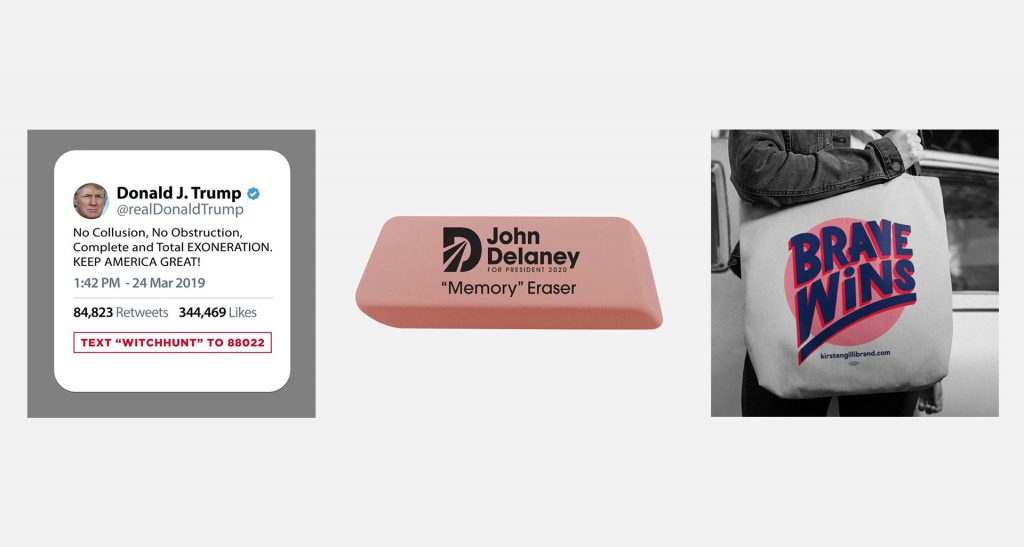
With strong points of view, it’s apparent that the Dems are investing deeply in differentiation—but will it be enough when November rolls around next year? Can relatable messaging and deliberate design choices topple the current administration? Over the last four years, branding has definitely made a shift to the core of a campaign’s success. Now it just needs to be leveraged.
P.S. Go vote.
You Need Some Rules
Constructing A Brand
Insights From the Intern: In Reflection







